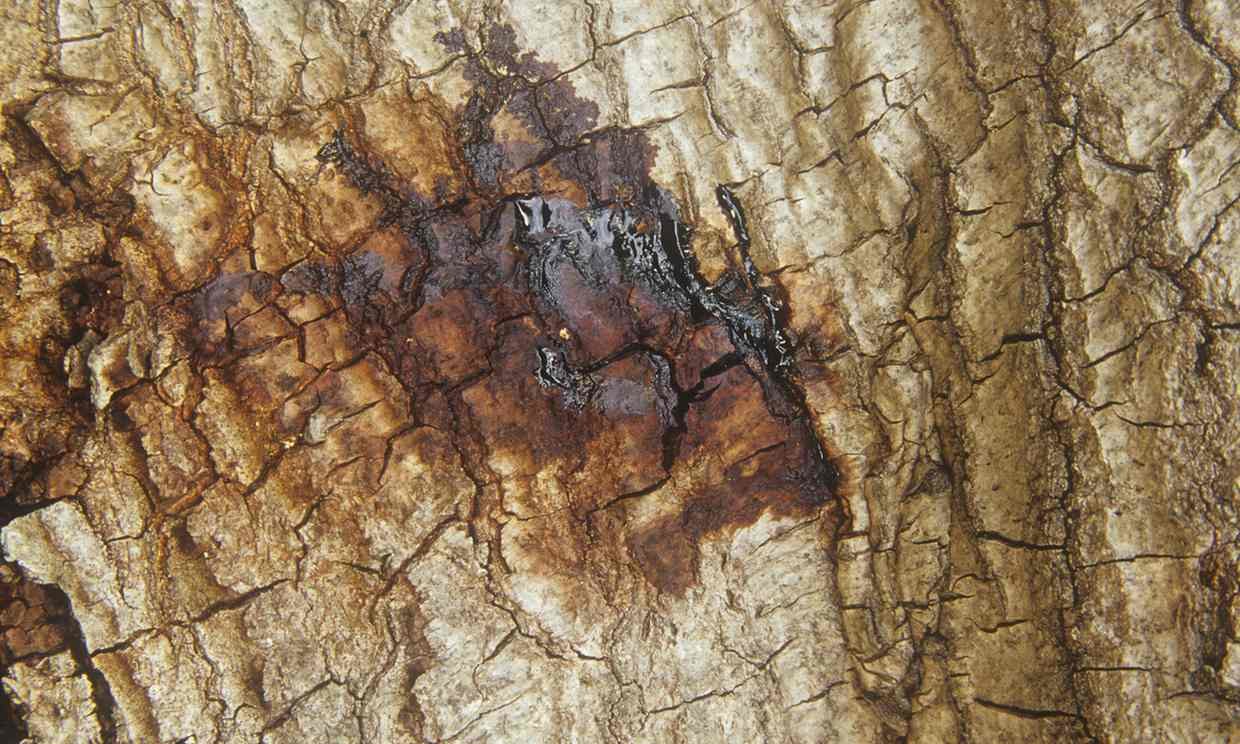
Friday, a forest ecologist at the University of Hawaii, started getting calls from concerned landowners in Puna, which is on the eastern tip of Hawaii's big island, in 2010. Their seemingly ubiquitous ohi'a trees were dying at an astonishing rate. The leaves would turn yellow, then brown, over just a few weeks - a startling change for an evergreen tree.
"It was like popcorn - pop, pop, pop, pop, one tree after another," Friday said. "At first people were shocked, now they are resigned.
"It's heartbreaking. This is the biggest threat to our native forests that any of us have seen. If this spreads across the whole island, it could collapse the whole native ecosystem."
Almost six years later and nearly 50,000 acres of native forest on the big island are infected with rapid ohi'a death disease. Rumors abound as to its origin: did it emerge from Hawaii's steaming volcanoes? A strange new insect? Scientists still aren't sure of where it came from or how to treat it.
Lisa Keith, researcher in plant pathology at the US Department of Agriculture, said that when she analyzed the disease "right away Dutch elm disease popped into my head". But this was unlike anything she, or anyone else, had ever dealt with.
"I'm not sure if there's been anything else like this in the world," she said. "The potential is there for major devastation." Keith said the disease hadn't yet spread to crops, like coffee, but it threatens a whole family of metrosideros trees and shrubs found mainly in the Pacific.
But the plight of the ohi'a is not unique - it's part of a quiet crisis playing out in forests across America. Drought, disease, insects and wildfire are chewing up tens of millions of trees at an incredible pace, much of it driven by climate change.
'Mountainsides dying'
Forestry officials and scientists are increasingly alarmed, and say the essential role of trees - providing clean water, locking up carbon and sheltering whole ecosystems - is being undermined on a grand scale.
California and mountain states have suffered particularly big die-offs in recent years, with 66m trees killed in the Sierra Nevada alone since 2010, according to the Forestry Service.
In northern California, an invasive pathogen called Sudden Oak Death is infecting hundreds of different plants, from redwoods and ferns to backyard oaks and bay laurels. The disease is distantly related to the cause of the 19th-century Irish potato famine, and appears to have arrived with two "Typhoid Marys", rhododendrons and bay laurels, said Dr David Rizzo, of the University of California, Davis.
"We're talking millions of trees killed, whole mountain sides dying," Rizzo said.
Despite its name, the pathogen slowly saps the life from oaks over the course of two to five years, turning them sickly brown. The disease spreads mostly through water, like rain splashing off an infected leaf on to a healthy neighbor. Rizzo said wind-driven rain could carry it miles at a time, and that it already ranged from the Oregon border down through the forests of Big Sur.
The pestilence appears to have arrived in the US through nursery plants in the 1980s, said Matteo Garbelotto, a professor at the University of California, Berkeley, who researches the genetics of the disease and trees that resist it. Garbelotto said researchers have found three distinct "subspecies" of the pathogen in the US - only one of which has escaped into the wild.
"There's a bit of concern here that maybe we're not doing enough to prevent introduction of other two lineages," he said. Authorities have quarantined 15 counties to keep infected plants from leaving, but Garbelotto fears that authorities lack the resources to do more.
Native American tribes are helping Rizzo's research near Oregon, and Garbelotto's team developed a mobile app that users can direct at a given tree to determine its risk for disease, and what they can do to protect it.
"It's a little bit like talking about mosquito abatement and malaria," Garbelotto said of efforts to protect some trees by isolating them. "You try to reduce the number of vectors, eliminate immediate neighbors, a bit like putting a mosquito net around the tree."
'Insect eruptions'
Five years of drought in the west have not only starved trees of water but weakened their defenses and created conditions for "insect eruptions" across the US, said Diana Six, an entomologist at the University of Montana. Bark beetles and mountain pine beetles, usually held in check by wet winters, now have more time to breed and roam. The latter have already expanded their range from British Columbia across the Rockies, to the Yukon border and eastward, into jack pine forests that have never seen the bug.
The outbreak is "something like 10 times bigger than normal, I would argue a lot more than that," Six said. "Basically a native insect is acting outside of the norm, because of climate change, and become an exotic in forests it's never been before. We haven't seen very good outcomes of exotics moving into native forests."





Trees have been dying from poisoned air and water since chemtrails went global in the late 1990's. Where was establishment media and its greenwashed masses back then? Oh, I forgot, they were mocking those of us who tried to inform them of what was happening. Atmospheric aerosols helped create the Sahara desert, but somehow we are supposed to believe that this metallic crap falling from the sky is just Fairy dust and that 10 years of drought is caused by 1 part in 10,000 of CO2.
As always, those who stand for nothing will fall for anything, and I'm sorry to say will get what they deserve.